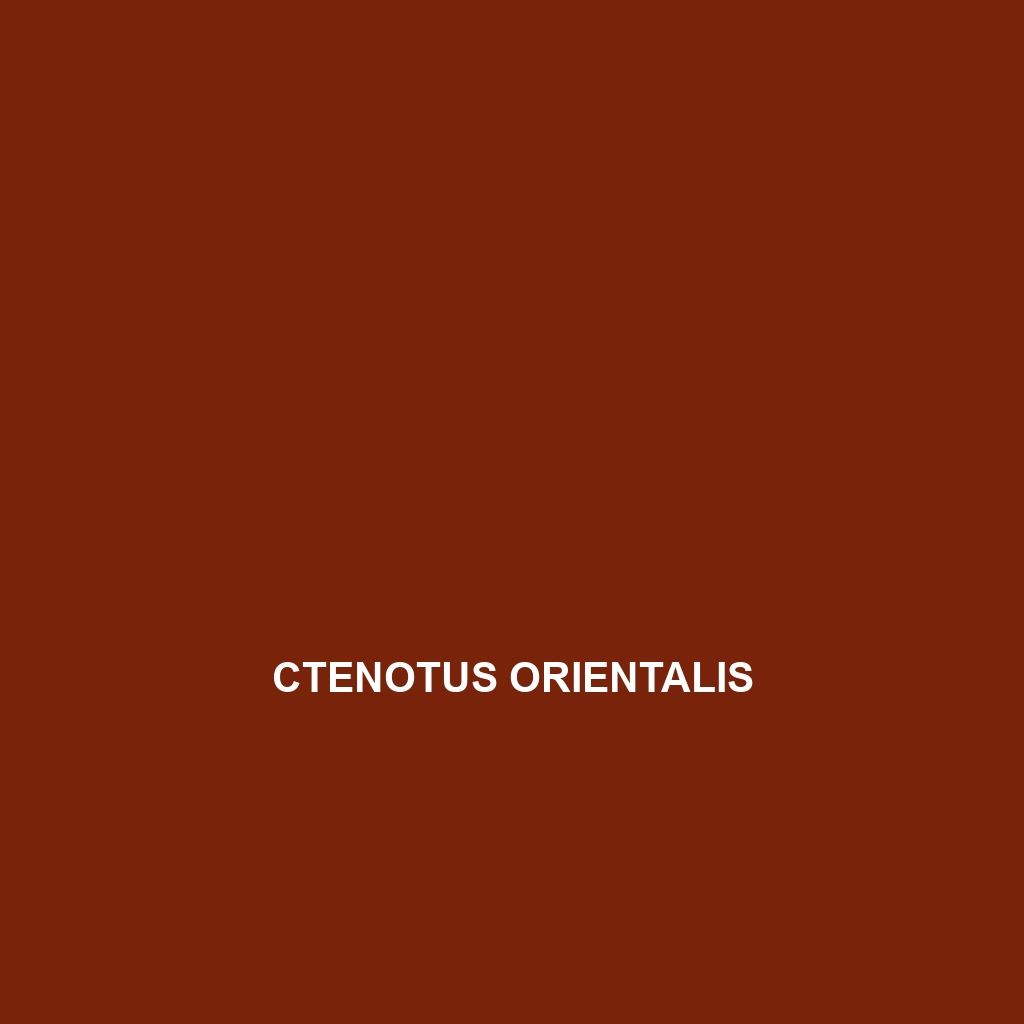Ctenotus orientalis – Species Description
Common Name: Ctenotus orientalis
Scientific Name: Ctenotus orientalis
Habitat
Ctenotus orientalis, commonly known as the Eastern Ctenotus, is primarily found in southeastern Australia, particularly in New South Wales and Victoria. This species thrives in a variety of habitats, including dry scrublands, open woodlands, and grasslands, often favoring areas with sandy soils and sparse vegetation. They are typically seen basking in the sun on rocks or logs, which aids in temperature regulation.
Physical Characteristics
The Eastern Ctenotus is characterized by its slender, elongated body, reaching an average length of 10 to 15 centimeters. Its coloration is quite distinct, featuring a blend of sandy brown and grey tones, often with darker stripes running along the length of its body. Notably, this species has a smooth scale texture and a long tail that is often used for balance while moving quickly through its habitat. The combination of these features makes Ctenotus orientalis easily identifiable in the wild.
Behavior
Ctenotus orientalis is primarily diurnal, meaning it is active during the day. This species exhibits a range of fascinating behaviors, including rapid movement to escape predators and territorial displays during mating season. Eastern Ctenotus are known for their burrowing habits as they seek refuge in sandy soils, which also serves as a hunting ground for insects and other small invertebrates.
Diet
The diet of Ctenotus orientalis is mainly composed of small insects and invertebrates. Common food sources include ants, beetles, and caterpillars. Their feeding habit is primarily insectivorous, and they utilize their quick reflexes to catch prey efficiently. This dietary preference not only supports their energy needs but also plays a significant role in controlling insect populations within their ecosystems.
Reproduction
Ctenotus orientalis engages in seasonal breeding, typically in the warmer months from late spring to summer. Females lay eggs after engaging in courtship displays with males, and the clutch size can range from 2 to 7 eggs, depending on environmental conditions. The young hatch within several weeks, and they are independent shortly after emergence, showcasing a rapid growth rate in early life stages.
Conservation Status
The conservation status of Ctenotus orientalis is currently classified as Least Concern according to the IUCN Red List. However, habitat loss and climate change pose potential threats to its populations, making ongoing monitoring essential for its continued survival.
Interesting Facts
One fascinating fact about Ctenotus orientalis is its ability to adapt to a range of environmental conditions, reflecting the resilience of this species. Additionally, they can be found in both coastal and inland regions, demonstrating a versatile habitat preference.
Role in Ecosystem
Ctenotus orientalis plays a crucial role in its ecosystem as both a predator and prey. By controlling insect populations, it helps maintain ecological balance. Furthermore, as prey for larger predators, such as birds of prey and snakes, this species contributes to the food web dynamics inherent to its environmental niche.
